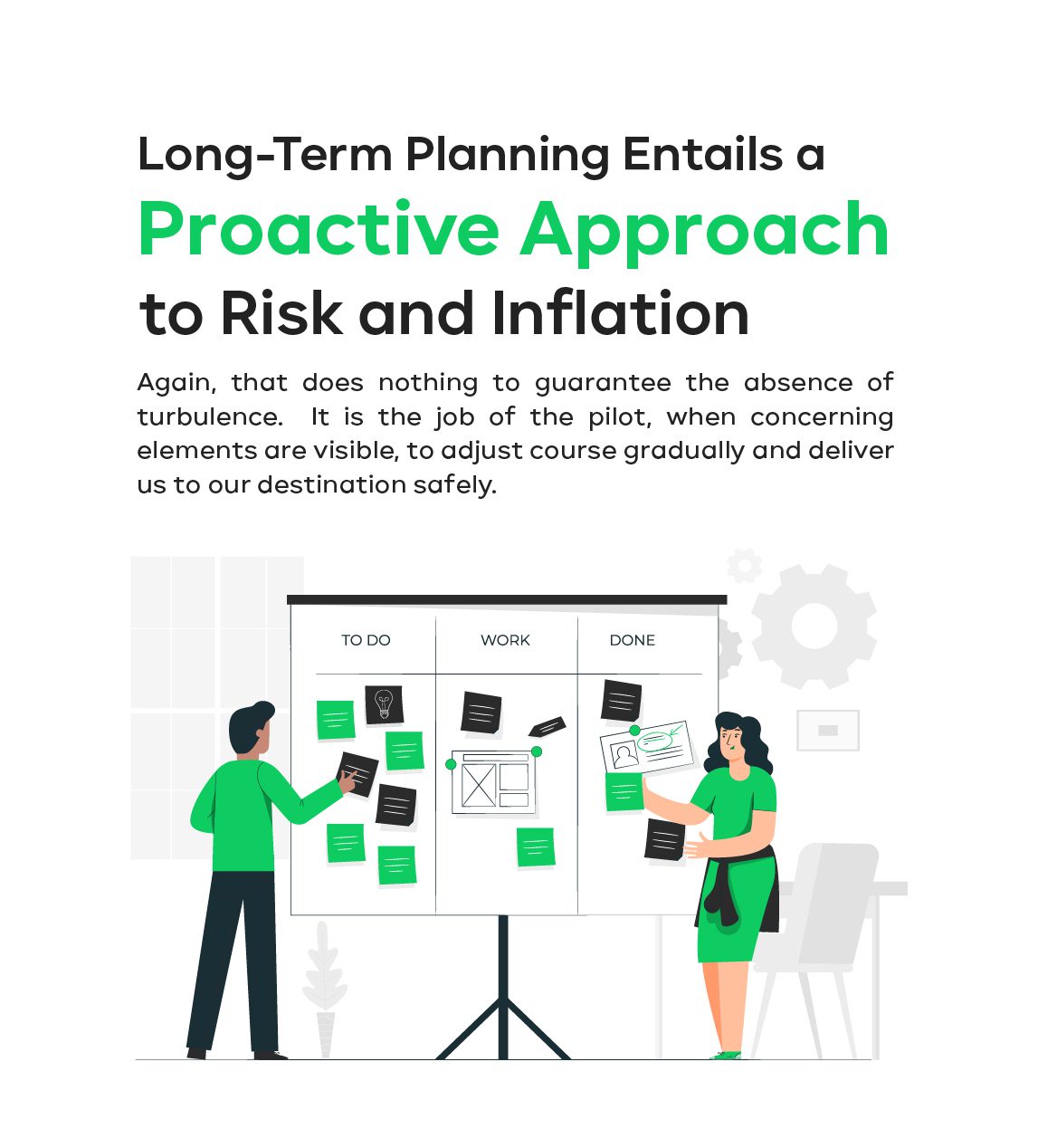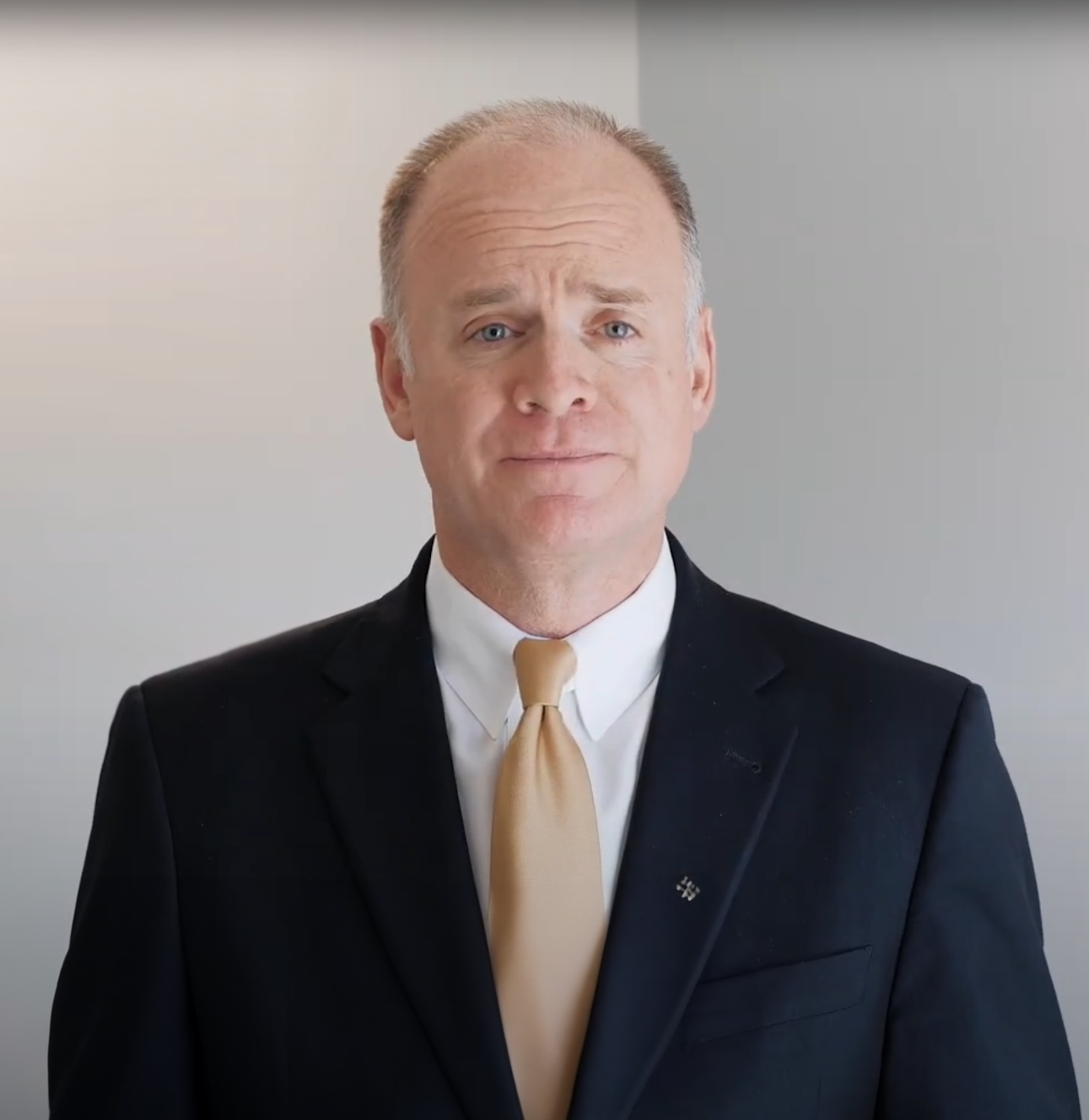
You Can’t Stop a Crisis, But You Can Create a Long-Term Financial Wellness Plan that Mitigates Day to Day Turmoil. Here’s How.
During times of uncertainty, various risks to the economy manifest themselves in the markets, often through the assumptions made regarding future performance. In recent years, the COVID-19 pandemic, rising inflation, and heightened geopolitical tensions are all examples of risks that have shaped markets and economies.
Naturally, during times such as these, the question becomes “What can be done to mitigate these risks as they occur?”
In my view, there are two components to that answer: Execution and Advice. So, to begin, let’s talk about execution. Most of the time, people believe that professional financial planning involves a primary focus on the execution of the plan – but that isn’t the case.
When Times Change, Your Financial Plan Should Adapt
Clearly, execution is important. To that end, over more than a year, we have taken steps to expand and refine sleeves of income-producing bond assets while also migrating heavily away from growth-focused assets. Valuations in the value discipline stocks are currently attractive, which also enables the generation of income through the reinvestment of dividends.
Said another way, we are directing our focus to companies that manufacture toilet paper, toothpaste, and bars of soap rather than those that make designer cups of coffee and other discretionary items. That just makes more sense.
From there, the management of risk can also come with the construction of options collars and holding options defensively to minimize the risk of loss.
We also look at alternative investments with clients for whom such instruments are appropriate. Doing so can provide us with a negatively correlated source of income and unique characteristics that assist in the management of holistic risk.
Your Financial Plan Should Guide How You Respond to Uncertainty
The first and most important answer to our original question is the advice that we consistently give our clients so that we can navigate periods of uncertainty while remaining true to their financial plans. If you think about it, if it weren’t for the plan, there would be no need for execution.
For most clients, we have mapped out the next 15 to 40 years of their lives. We have identified targets of income, parameters of risk, and the objectives that we are trying to achieve, as consistently as possible, over time.
The key to making that happen is to not quit. We encourage our clients to invest through periods such as this and engage in key passive strategies to manage risk such as dollar-cost averaging or portfolio rebalancing. We encourage our clients to leverage periods of dislocation like this to their benefit and make them work for you.
Clearly, that doesn’t guarantee that we won’t have down years. The objective, however, is to exceed the average annual targets that we have outlined in the plan, over the time that we have, and within the parameters of risk that we have identified for the achievement of long-term goals such as consistent income and other planning objectives. Notice that I referred to targets that we’ve outlined in the plan. That does not necessarily imply that we’re experiencing positive returns year over year. It means that we’re proactive in the execution and implementation of the plan, with a focus on achieving its long-term goals.
Long-Term Planning Entails a Proactive Approach to Risk and Inflation
There are always areas of the market to which exposure is appropriate as the economy changes. When it comes to execution, my job is to help clients identify those areas and to do so as proactively as possible. But at the end of the day, this is about fulfilling a long-term plan more so than it is about the day-to-day execution. When clients can see the importance of execution when considering the bigger objective, which is the achievement of planning goals, it helps to alleviate the angst that can come during periods such as this.
To further exemplify the importance of long-term planning, I will use this analogy: I have flown as an airline passenger on many occasions during my lifetime. The understood proposition is that the pilot will transport me from where I am, at point A, and deliver me to my desired destination, at point B. There has never been a time when I boarded the aircraft, however, that the pilot met me at the door and assured me that the journey would be without turbulence.
Sometimes, you can’t see the turbulence through which you are flying. When we encounter that air pocket, the pilot engages the means at his or her disposal to manage the turbulence. Among other things, the pilot uses the flaps, stabilizers, the rudder, and trim tabs to stabilize and control the aircraft as he navigates the turbulence.
That doesn’t mean that we as passengers don’t catch our stomachs, if you will, and sometimes grip the armrests. But even with the ups and downs we are, nonetheless, making progress toward our destination. We don’t find the nearest parachute and bail out of the aircraft because of the bumps along the way.
Other times, however, turbulence is readily evident. The pilot can see a thunderstorm complex 100 miles out on radar. But when this happens, the pilot does not fly to the thunderstorm complex and then suddenly bank sharply to the right. More than 100 miles away, the pilot begins to gradually tweak the course of the aircraft in such a way that over time we can fly around the thunderstorm complex and resume our original course.
Again, that does nothing to guarantee the absence of turbulence. It is the job of the pilot, when concerning elements are visible, to adjust course gradually and deliver us to our destination safely.

A Good Planner Will Adjust Your Financial Plan to Take Inflation Into Account
For more than a year, we have become increasingly aware of the effects of inflation, supply chain disruption, pandemics, and geopolitical risks. As these elements became increasingly worrisome, we as financial planners began to gradually adjust our flightpath so that we could navigate these elements to the best of our ability while still making progress toward the destination of point B.
I believe that when clients clearly understand that a holistic financial plan, which could literally span decades, is governing the day-to-day execution of that plan, it does a lot to alleviate concerns that come with sensational headlines and volatile markets.
As I said earlier, the tools that we use, and the exposure that we have to the markets, change quarter to quarter and year over year, but the plan, and the approach to arriving at point B, remain constant.
I would just encourage everyone to consistently communicate with their professional financial planner and investment advisor, and candidly express your concerns so that your planning professional may be in the best position to proactively address them. Through that interaction, confidence in the overriding holistic plan should be solidified. Remember: This is a marathon, not a sprint. That’s not a cliché, but it is the greatest amount of truth that I could share. Especially at times like these, you must find the intestinal fortitude to rise above the minute-by-minute noise yet remain actively engaged with your professional financial planner to navigate the turbulence that will almost certainly exist between your origination point and your destination point.
*David Guttery and Brandon Guttery offer products and services using the following business names: Keystone Financial Group – insurance and financial services | Ameritas Investment Company, LLC (AIC), Member FINRA/SIPC – securities and investments | Ameritas Advisory Services (AAS) – investment advisory services. AIC and AAS are not affiliated with Keystone Financial Group. Information provided is gathered from sources believed to be reliable; however, we cannot guarantee their accuracy. This information should not be interpreted as a recommendation to buy or sell any security. Past performance is not an indicator of future results.







